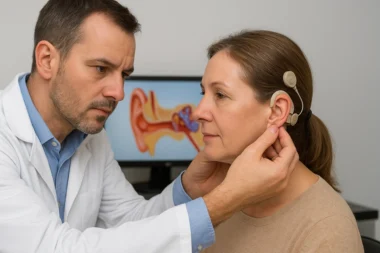Introduction
Drug discovery is a complex, multi phased process that traditionally spans over a decade and demands significant financial and computational resources. The pharmaceutical industry is increasingly turning to Artificial Intelligence (AI) to streamline this process by leveraging data driven insights and predictive modeling. AI enables the rapid identification of therapeutic candidates, optimization of molecular properties, and prediction of drug efficacy and safety significantly reducing the cost and time associated with new drug development.
How is AI Used in Drug Discovery?
AI technologies are now integrated across key stages of the drug discovery pipeline:
| Stage | AI Application |
|---|---|
| Target Identification | Predicting biological targets (genes/proteins) using genomic and proteomic data |
| Hit Identification | Virtual screening of large compound libraries to identify promising drug candidates |
| Lead Optimization | Refining chemical structures for improved potency, solubility, and bioavailability |
| ADMET Prediction | Forecasting Absorption, Distribution, Metabolism, Excretion, and Toxicity profiles |
| Drug Repurposing | Identifying new uses for existing drugs using network analysis and ML algorithms |
| Clinical Trial Design | Predictive modeling for patient stratification and trial optimization |
How It Works: Technical Workflow of AI in Drug Discovery
The use of AI in drug discovery follows a modular pipeline, integrating biomedical datasets, feature engineering, machine learning algorithms, and simulation frameworks.
Data Acquisition and Preprocessing
AI requires high quality, large scale datasets that may include:
- Molecular structures (SMILES, InChI)
- Bioassay results
- Omics data (genomics, proteomics, transcriptomics)
- Pharmacokinetics and toxicity data
- Clinical trial records
Techniques Used:
- Data cleaning and normalization for cross source consistency
- Dimensionality reduction (PCA, t-SNE) to handle high dimensional biological data
- Feature extraction: conversion of molecules to fingerprints, graphs, or descriptors
Target Identification and Validation
AI algorithms analyze biological networks, gene expression profiles, and disease associations to suggest new targets.
Technologies:
- Deep Neural Networks (DNNs) for transcriptomic pattern recognition
- Knowledge graphs linking diseases, genes, and compounds
- Natural Language Processing (NLP) for mining biomedical literature
Compound Screening and Virtual Docking
AI accelerates in silico screening by predicting drug likeness, activity, and binding affinity without requiring physical assays.
Key Methods:
- Convolutional Neural Networks (CNNs) for 3D protein ligand binding prediction
- Graph Neural Networks (GNNs) for molecular graph learning
- Reinforcement Learning (RL) for de novo molecular generation
- Molecular docking simulation enhanced by ML scoring functions
Lead Optimization and Drug Design
Using iterative feedback from predicted biological activity, AI optimizes compounds to enhance therapeutic properties.
Approaches:
- Generative Adversarial Networks (GANs) for novel molecule synthesis
- Autoencoders to explore latent chemical spaces
- Bayesian Optimization for multi objective compound refinement
ADMET and Toxicology Modeling
AI predicts critical pharmacological properties such as:
- Absorption rate (via intestinal permeability models)
- Metabolism (cytochrome P450 enzyme interaction prediction)
- Toxicity (hepatotoxicity, cardiotoxicity)
Tools and Models:
- Random Forests and Support Vector Machines (SVMs)
- Recurrent Neural Networks (RNNs) for time dependent toxicity patterns
- QSAR (Quantitative Structure Activity Relationship) modeling via deep learning
Clinical Trial Optimization
AI models patient response to identify optimal trial design, cohort selection, and risk stratification.
Capabilities:
- Survival analysis using Cox regression + neural network hybrids
- Synthetic control arms via historical data modeling
- Real world evidence mining from EHR and wearable device datasets
Streamlining Drug Discovery with AI: Data Driven Insights & Predictive Modeling
Artificial Intelligence transforms the traditionally lengthy and costly drug discovery process into a faster, more efficient pipeline by:
1. Leveraging Data Driven Insights
- AI integrates and analyzes large scale biological datasets including genomics, proteomics, molecular structures, and clinical data.
- Pattern recognition algorithms detect relationships between diseases, targets, and drug compounds that might not be visible to human researchers.
- NLP tools mine scientific literature and patents to extract valuable insights for target selection and repurposing opportunities.
2. Applying Predictive Modeling
- Machine Learning (ML) models predict drug target interactions, compound activity, and toxicity before lab testing.
- AI simulates how molecules behave in biological systems, identifying promising leads through virtual screening.
- Predictive models forecast ADMET properties (Absorption, Distribution, Metabolism, Excretion, Toxicity), reducing late stage failures.
Outcome:
- Fewer unnecessary experiments
- Faster lead compound identification
- Reduced time to market and development cost
How AI Enables Rapid Identification of Therapeutic Candidates
High Throughput Virtual Screening (HTVS)
AI models rapidly screen millions of chemical compounds in silico (via computer simulation) to identify molecules likely to bind to a specific biological target (protein, enzyme, receptor).
Technologies Used:
- Convolutional Neural Networks (CNNs) for 3D molecular binding prediction
- Graph Neural Networks (GNNs) for analyzing molecular graphs (nodes = atoms, edges = bonds)
- Support Vector Machines (SVMs) and Random Forests for classifying active vs. inactive compounds
Molecular Similarity and Activity Prediction
AI algorithms assess structure activity relationships (SAR) by comparing unknown molecules to known active compounds.
Models Applied:
- Quantitative Structure Activity Relationship (QSAR) models using deep learning
- Fingerprint based classification using Morgan or MACCS descriptors
- Chemical embedding models like Mol2Vec, ChemBERTa
Target Prediction from Omics Data
AI uses genomics, transcriptomics, and proteomics data to identify new biological targets associated with a disease.
Algorithms:
- Unsupervised clustering (e.g., K-means, DBSCAN) to group co-expressed genes
- Deep neural networks (DNNs) to learn gene disease associations
- Knowledge graphs and link prediction to infer novel drug target interactions
Generative Modeling for New Molecule Design
AI can generate novel compounds from scratch that are structurally and functionally similar to known therapeutic agents.
Techniques:
- Generative Adversarial Networks (GANs) for molecule synthesis
- Variational Autoencoders (VAEs) for navigating chemical space
- Reinforcement Learning (RL) to optimize drug likeness, binding affinity, and toxicity simultaneously
Natural Language Processing (NLP) for Scientific Discovery
AI-driven NLP tools extract knowledge from millions of biomedical papers, clinical trial data, and patents.
Tools:
- Named Entity Recognition (NER) to identify diseases, genes, and compounds
- Relation extraction models (e.g., BERT-based) to discover drug target or drug disease links
Multi Modal Data Fusion
AI integrates data from multiple biological sources (chemical structure + gene expression + patient data) to improve prediction accuracy and relevance.
Workflow:
- Input: Molecular descriptors + Omics data + Pathway databases
- Output: Ranked list of candidate molecules for experimental validation
Optimization of Molecular Properties and Prediction of Drug Efficacy & Safety Using AI
Optimization of Molecular Properties
AI algorithms are used to iteratively improve the physicochemical and pharmacokinetic characteristics of lead compounds to maximize their drug-likeness, potency, and manufacturability.
Key Properties Optimized:
- Binding affinity to the target (measured in kcal/mol)
- Solubility (LogS)
- Lipophilicity (LogP)
- Molecular weight
- Synthetic accessibility
- Stability in plasma or pH environments
AI Techniques Used:
- Multi objective optimization using Bayesian optimization or reinforcement learning to balance trade offs (e.g., potency vs. toxicity)
- Generative models (VAEs, GANs) that create novel molecules with improved profiles
- AutoML frameworks to tune hyperparameters of predictive models in SAR analysis
Result:
- Avoidance of lab synthesis of poorly optimized molecules
- Reduced lead optimization cycles (from years to months)
Prediction of Drug Efficacy
Efficacy prediction is essential for determining whether a drug will produce the intended biological effect in preclinical and clinical models.
Methods Used:
- QSAR modeling to correlate molecular features with bioactivity
- Transcriptomic response prediction to assess drug impact on gene expression
- Simulated protein ligand docking enhanced by machine learning scoring functions
- Patient derived models using AI to predict response across different genetic backgrounds
Model Examples:
- Deep neural networks trained on IC₅₀, EC₅₀, or Ki values
- Ensemble models to combine docking scores, physicochemical parameters, and network pharmacology
Result:
- Prioritization of high efficacy compounds before expensive in vivo tests
- Reduced number of failed candidates in preclinical stages
Prediction of Drug Safety (ADMET)
AI enables early stage prediction of a compound’s Absorption, Distribution, Metabolism, Excretion, and Toxicity (ADMET), which are common causes of clinical trial failure.
AI for Safety Profiling:
- Toxicity prediction models (e.g., hepatotoxicity, cardiotoxicity) using historical data and molecular descriptors
- Metabolic stability prediction via enzyme interaction models (e.g., Cytochrome P450)
- Machine learning based permeability models for blood brain barrier (BBB) or intestinal absorption
Tools and Approaches:
- SVMs, Random Forests, Gradient Boosting Machines
- Recurrent Neural Networks (RNNs) for time dependent drug behavior
- Deep toxicogenomic analysis linking compounds to genetic biomarkers of toxicity
Result:
- Pre screening out high risk compounds before animal or human trials
- Better regulatory compliance through predictive toxicology
- Fewer late stage trial terminations
How These Lead to Cost and Time Reduction
| Traditional Process | With AI Integration |
|---|---|
| Trial and error synthesis | AI guided compound design minimizes unnecessary synthesis |
| Lab screening of millions of compounds | Virtual screening reduces lab effort significantly |
| Long cycles of optimization | Rapid in silico optimization speeds up decision making |
| High failure rates in trials | Early safety/efficacy prediction reduces failed candidates |
| Manual ADMET testing | AI modeling automates and predicts likely profiles |
Overall Benefits:
- Cost reduction up to 30–50% in early discovery stages
- Development time reduced by 2–4 years
- Improved success rate from preclinical to clinical phases
Case Study: Accelerated Lead Optimization Using AI in Drug Discovery
Background:
A pharmaceutical R&D team identified 5,000 initial hit compounds targeting a protein associated with a rare form of cancer. Traditional lead optimization would have required approximately 18 months, involving extensive medicinal chemistry, in vitro testing, and iterative refinement cycles.
AI-Driven Workflow:
Step 1: Activity Prediction
- Trained QSAR models using historical compound protein interaction data.
- Predicted IC₅₀ values to filter out low potency molecules.
Step 2: Molecular Generation
- Used Autoencoders and Reinforcement Learning models to generate analogs with:
- Improved binding affinity
- Enhanced solubility (LogS improvement: +2.4x)
- Lower predicted cardiotoxicity
Step 3: Safety and Pharmacokinetics
- Applied deep ADMET prediction models to assess:
- Hepatotoxicity
- Blood brain barrier permeability
- Enzymatic degradation risk (CYP450 interaction)
Step 4: Final Filtering and Validation
- Shortlisted top 50 candidates for experimental testing.
- Eliminated >90% of unnecessary wet lab assays.
Outcomes and Impact:
| Metric | Traditional Process | AI-Driven Approach |
|---|---|---|
| Time for Lead Optimization | ~18 months | 4 months |
| Cost of Candidate Refinement | 100% baseline | ~55% of baseline |
| Experimental Screening Load | Full panel | Reduced by >90% |
| Toxicity Failures Detected | Late (in-vivo) | Pre-screened (AI) |
| Top Candidates for Trials | Uncertain | 1 Promising Molecule |
Conclusion
Artificial Intelligence enables a paradigm shift in drug discovery, accelerating every stage from compound screening to clinical trial design. By leveraging predictive modeling, optimization algorithms, and multi-modal data integration, AI significantly reduces R&D costs and time-to-market, thereby improving therapeutic outcomes and success rates.



